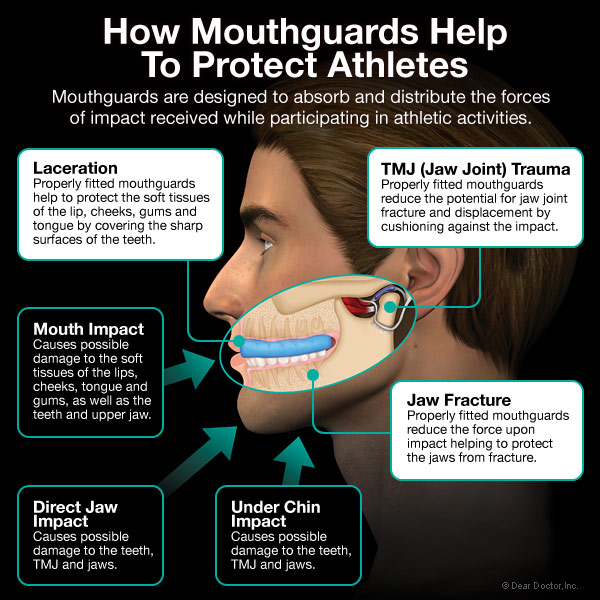Approximately 15 million children participate in organized sports in the United States, and each season there is a 10% chance that they will receive an injury to the mouth or teeth. For any athlete playing a sport, a mouthguard is an essential piece of athletic gear that should be part of your standard equipment from an early age. In fact, studies show that athletes are 60 times more likely to suffer harm to the teeth if they’re not wearing a mouthguard.
While collision and contact sports, such as boxing, are higher-risk sports for the mouth, you can experience a dental injury in non-contact activities too, such as gymnastics and skating. In fact, while most people think of football as one of the most dangerous sports, a basketball player’s risk of orofacial (having to do with the mouth, jaws, and face) injury is 15 times that of a football player!
Boston Celtics forward and team captain Paul Pierce has some personal experience with orofacial injuries: two of his own teeth were broken during a 2002 game against the Phoenix Suns, and during a November 2008 game, Pierce was involved in a loose ball scramble that resulted in Indiana Pacers forward Danny Granger losing two teeth (see photo above). In these two instances, neither player was wearing a mouthguard, which meant that both had to spend time and money off the basketball court and in the dental chair to repair the damage.
Mouthguards, also called mouth protectors, help cushion a blow to the face, minimizing the risk of broken teeth and injuries to your lips, tongue, face or jaw. But all mouthguards are not created equal. A custom-fit mouthguard greatly increase the protection through a more form-fitting appliance. The tighter the fit, the less chance the mouthguard will fall out during impact, and the mouthguard can do its job to protect you..
Custom mouthguards spread the force of the blow over all the teeth that are covered by the mouthguard. They stop violent contact of upper and lower teeth. They also keep lips away from misaligned teeth, which protect the lips, teeth and orthodontic treatment (example: braces). Mouthguards always hold the jaws apart to act as shock absorbers and prevents upward and backward displacement of the condyles in their fossae. This alone can help reduce concussions.They also can help cushion a blow that could cause head or neck injuries, injuries to the jaw, or even concussions.
There are three types of mouthguards:
- Stock These are inexpensive and come pre-formed, ready to wear. Unfortunately, they often don’t fit very well. They can be bulky and can make breathing and talking difficult.
- Boil and bite These mouth protectors can be bought at many sporting goods stores and drugstores and may offer a better fit than stock mouth protectors. They are first softened in water (boiled), then inserted and allowed to adapt to the shape of your mouth.
- Custom-fitted These are made by your dentist for you personally. They are more expensive than the other versions, but because they are customized, usually offer the best fit and protection. Like retainers and braces, they also come in more personalized designs (colors, patterns, etc.)
A properly fitted mouthguard may be especially important for people who wear braces or have fixed bridge work. A blow to the face could damage the brackets or other fixed orthodontic appliances. A mouthguard also provides a barrier between the braces and your cheek or lips, limiting the risk of soft tissue injuries. A custom-fitted mouthguard is also more comfortable and more likely to be worn. If you wear braces or another fixed dental appliance on your lower jaw, your dentist may suggest a mouth protector for these teeth as well.
For younger athletes it is important to remember that the mouth is still evolving and growing, so it may be necessary to revisit the fit of your mouthguard and make sure it is still offering the best protection possible. Your dentist can help you select a mouthguard that will provide the best protection throughout your athletic career.
Sources:
- https://www.massdental.org/mouthguards.aspx
- http://www.mouthhealthy.org/en/az-topics/m/mouthguards
- https://www.massdental.org/uploadedFiles/3_For_the_Public/32_Oral_Health_Topics/Basketball%20Players.pdf
- https://keystoneind.wordpress.com/2013/09/19/the-history-of-athletic-mouthguards/




